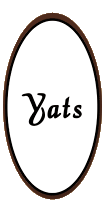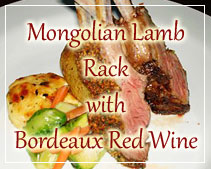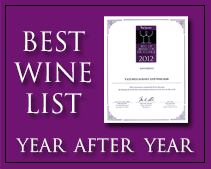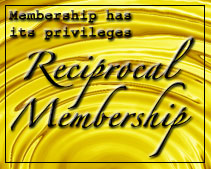Four types of team building explained
January 04, 2011
How to Improve Teamwork
The foundation of good teamwork is having a shared commitment to common objectives. Without this, all other forms of team building will have a limited impact. Therefore, before using any team building exercises and activities, or looking at relationships in the team, or embarking on other forms of team building, you need to put this foundation of shared commitment in place by:
* Clarifying the team goals, and building ownership/commitment to those goals across the team
* Identifying any issues which inhibit the team from reaching their goals, rand emoving the inhibitors
* Putting in place enablers to help the goals be achieved to higher standards
* Using team processes in the correct sequence to help the team climb one rung at a time up the ladder of performance
Team Building is therefore not just a single event (though events can play a part), nor is it something that can be done by someone outside the team (though outside consultants can help). It is a task primarily for the team manager and the team members themselves.
Four Types of Team Building
Once you have established the basic foundation of shared commitment, the approach you then take to team building depends on the size of the team and the types of issues that may be inhibiting good teamwork.
Individuals
In a project environment, where team composition is continually changing, the emphasis must be on selecting people who are self-starters and developing the skills in individuals to become effective team members very quickly. The ‘scale’ involved is 1 person, and the team building consultant or trainer is endeavouring to change the skills and abilities of the individual at operating within a team (or within multiple teams).
Small Teams
In teams where membership is static – typically in management teams – the motivational challenge is to align the drive of the disparate individuals around the same goals. There can be many inhibitors to performance – eg: personality, dynamics, processes etc., and how the individuals within the team relate to each other can have a big bearing on team performance. So, if a member leaves, or another joins, the dynamics of the team can be changed greatly and the task of team building has to start again. Here, the scale is small – say, 2 to about 12 – and the main priorities are to build the foundation of collective ownership of team objectives, and then overcome inhibitors through team bonding, facilitation, processes, etc..
Team Islands
A larger scale operates between teams. Where the teams do not relate well, they are called ‘team islands’. The motivational challenge is to overcome the problem of “in/out groups” so that people have positive attitudes towards those in other teams. There are often many barriers between teams that inhibit team performance, but not all of them can be removed. The main task, therefore, is the bridging, or relationship, between the teams.
Large Teams
The largest scale is organisational culture change. With the exception of the senior management team, any changes to personnel have limited impact on the corporate culture. The key aim of company-wide team building is to change the behaviours and attitudes prevalent in the organisation, which are almost independent of who actually works there – new recruits who are ‘different’ often start behaving in accord with the existing culture.
Summary
* A team is a group of people working towards a common goal
* Team building is a process of motivating and enabling the team to achieve that goal
* The stages involved include clarifying the team goals, building ownership, removing inhibitors, introducing enablers and using processes to move up the ladder of performance
* The nature of the team building varies in terms of scale, and what you are trying to achieve:
Type of team building Scale What is changed
Individual 1 person Who is involved in the project, and their individual skills/perceptions
Small Team 2-12 people Orientation around the team goal, and bonding (relationships between people)
Team Islands 2 or more teams Orientation towards higher goals, and bridging (relationships between teams)
Organisation 15+ people Commitment to the corporate mission, and the culture of the organisation
Source: http://www.teamtechnology.co.uk/tt/h-articl/team-building-part2.htm
Are these articles useful for enhancing your wine and dine experience in the Philippines. Do they also help you with travel, leisure, vacation, dining out, nightlife and other leisure activities plans in Manila and other major cities of Philippines? Yats Restaurant hopes to provide you with ample information so you can plan your trips to Pampanga Angeles City Clark Freeport Zone whether you are travelling from Manila or other Asian countries such as Hong Kong, Shanghai, Singapore, Malaysia or Korea.
Restaurant reservations in Manila Philippines, planning of menu, selection of wine for dinner and booking a private function and event in Angeles City Clark Freeport Zone can all be handled. Yats Restaurant and Wine Bar has been regarded by many to be the premier restaurant north of Manila Philippines. Its 3000-line award-winning restaurant wine list has kept many wine lovers happy dining in this restaurant in Angeles City Clark Philippines for over a decade.
Yats Restaurant and Wine Bar was built by Hong Kong-based Yats International in 2000 to provide a world-class cozy fine dining restaurant, business meeting facilities and venues for private dinners and functions in Pampanga Angeles City Clark Freeport Zone. Pampanga Angeles City Clark Philippines was selected for this restaurant because of safety, clean air, absence of traffic and proximity to Manila and Subic.
For comments, inquiries and reservations, email Restaurant@Yats-International.com or call these numbers:
(045) 599-5600 0922-870-5178 0917-520-4401
Http://www.YatsRestaurant.com
Getting to this fine dining restaurant of Angeles City Clark Freeport Zone Pampanga Philippines
How to get to this fine-dining restaurant in Clark Philippines? Once you get to Clark Freeport, go straight until you hit Mimosa. After you enter Mimosa, stay on the left on Mimosa Drive, go past the Holiday Inn and Yats Restaurant (green top, independent 1-storey structure) is on your left. Just past the Yats Restaurant is the London Pub.











